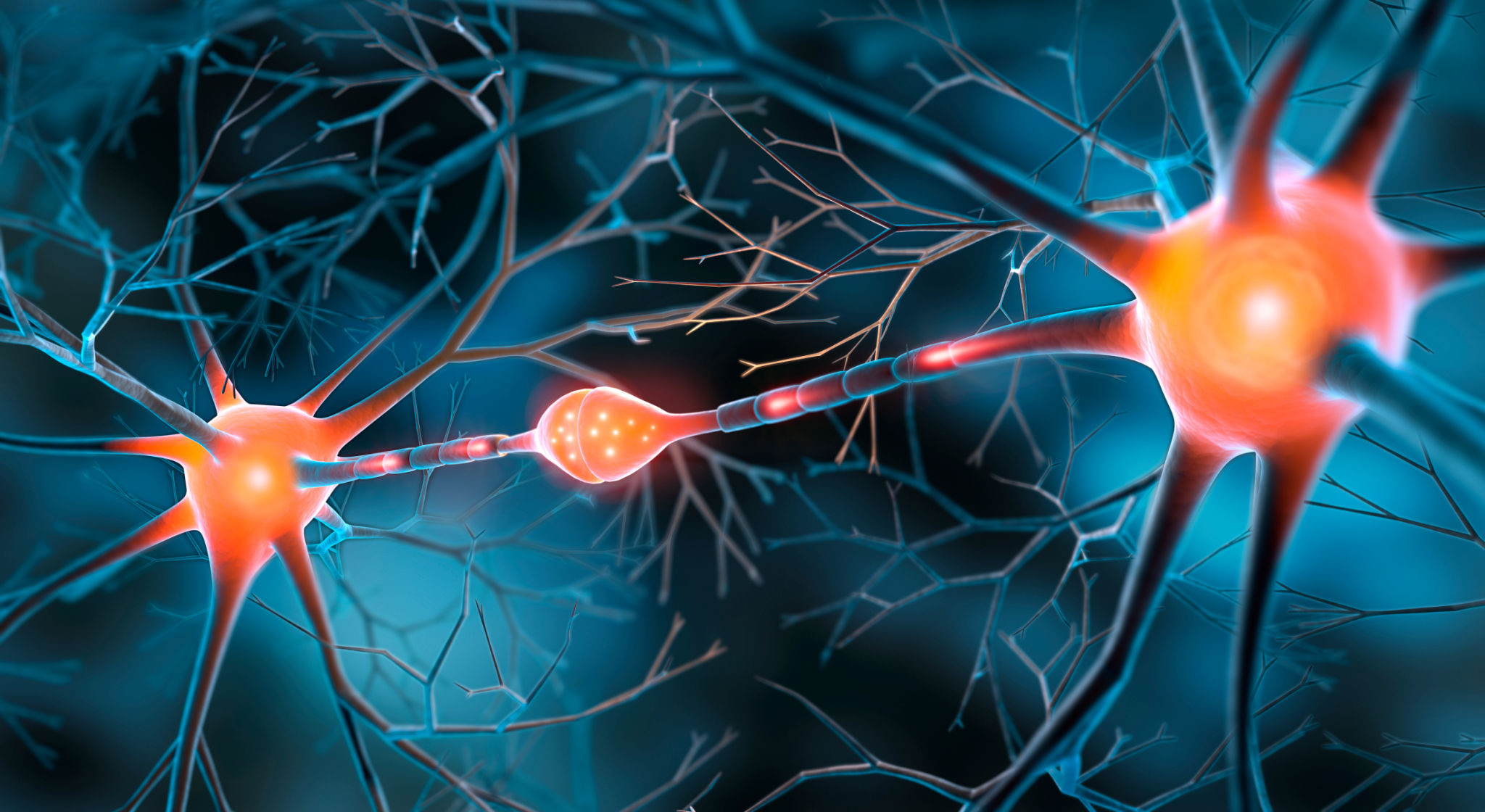Beyond the Basics: Deepening Your SFH Practice with Pain Pathways, Neurotransmitters, and a Fresh "Miracle Question"
As you begin to work with clients, understanding the "why" behind the "how" can significantly deepen your practice and enhance your confidence.
Let's explore three interconnected concepts that are vital to effective SFH: the Pain Pathways and Descending Analgesic Pathways, the critical role of Serotonin and GABA, and a profoundly useful alternative to the Miracle Question.
Understanding the Brain's Pain Processing: Pain Pathways and Descending Analgesic Pathways
You've learned about the brain's incredible capacity for change – neuroplasticity. Now, let's apply that to a common human experience: pain. Let's consider the complex neurological networks involved in how pain signals travel and how the brain can actively regulate them.
Pain Pathways (Ascending): When there's tissue damage or irritation, specialised nerve endings (nociceptors) send electrical signals up the spinal cord to various parts of the brain. These signals travel along specific pathways, such as the spinothalamic tract, reaching areas such as the thalamus (the brain's relay station) and then to the somatosensory cortex (where the location and intensity of pain are perceived) and other brain regions involved in emotion and meaning. This is the ascending pathway – the "what hurts and how much" signal.
Descending Analgesic Pathways (DAP): This is where it gets incredibly empowering for SFH! Your brain isn't just a passive receiver of pain signals; it has its own built-in pain control system. These are neural pathways that originate in specific brainstem areas (like the periaqueductal gray, PAG, and rostral ventromedial medulla, RVM) and send signals down the spinal cord. These signals can inhibit, or significantly reduce, the transmission of pain signals before they even reach higher brain centres. Think of them as your brain's natural "dimmer switch for pain".

Why is this crucial for SFHTs?
Pain is Biopsychosocial: These pathways confirm that pain is not merely a physical sensation. Psychological, emotional, and cognitive factors profoundly influence the activity of these descending pathways.
SFH Activates the DAP: Your work directly facilitates the activation of these powerful Descending Analgesic Pathways. By guiding clients to reduce anxiety & Stress. The deep relaxation of the hypnotic trance, combined with a focus on positive solutions, calms the nervous system. This reduced stress directly enhances the activity of the DAP.
Shift Focus & Generate Positive Emotion: Moving attention away from pain and towards desired outcomes, pleasant sensations, and positive emotions (hope, anticipation, contentment) actively stimulates the DAP. When the brain is engaged in positive processing, it prioritizes activating these pain-inhibiting pathways.
Cultivate a Sense of Control: Empowering clients with the understanding that their mind can influence their pain experience itself can activate these pathways, leading to greater perceived control and reduced suffering.
When a client understands, even simply, that their mind has this incredible internal pain control system, it's incredibly empowering. You're helping them tap into and optimise their own body's natural analgesic abilities.
The Brain's Natural Pharmacy: Serotonin & GABA
Now, let's talk about the incredible brain chemistry that underpins everything we do. As SF Hypnotherapists, while we don't prescribe medication, we absolutely influence the production and regulation of vital neurotransmitters like Serotonin and GABA. These are key players within those Descending Analgesic Pathways.
Serotonin: Beyond its role in mood, serotonin is a critical neurotransmitter in the Descending Analgesic Pathways. Neurons in the brainstem release serotonin down into the spinal cord, where it acts to inhibit the transmission of pain signals. Think of serotonin as a volume knob – when it's well-regulated, it helps turn down the "loudness" of pain. Sufficient serotonin is also crucial for overall well-being, sleep, and appetite, all of which contribute to a more resilient system, less prone to pain amplification.
GABA: GABA (Gamma-Aminobutyric Acid) is the primary inhibitory neurotransmitter in the central nervous system. It acts like a "brake" on neural activity, directly reducing the excitability of nerve cells.Reducing Anxiety: High anxiety is often linked to insufficient GABA, leading to overactive neural circuits.
Dampening Pain Signals: By calming overall neural chatter and specifically inhibiting pain-transmitting neurons in both the spinal cord and brain regions, GABA contributes to a more relaxed state and directly suppresses pain signals. When your client is relaxed and calm in a trance state, their GABAergic system is more active, aiding in the overall analgesic effect.
How SFH Optimizes These Neurotransmitters:

Your SFH sessions are a powerful catalyst for improved brain chemistry:
Stress Reduction: The deep relaxation induced by trance states directly reduces the 'fight or flight' response. Chronic stress is known to deplete serotonin and GABA. By alleviating stress, SFH creates an environment conducive to their more optimal production and utilization.
Positive Future Focus: By focusing on solutions, successes, and desired outcomes, you are actively engaging brain circuits associated with reward, positive emotion, and future planning. This positive psychological state is conducive to optimal serotonin and GABA production.
Improved Sleep: Better sleep, a common outcome of SFH, is directly linked to healthier serotonin and GABA levels. These neurotransmitters, in turn, regulate sleep cycles.
Sense of Control and Hope: Empowering clients to see solutions and take steps forward fosters a sense of control and hope, positive psychological states that inherently support healthy neurotransmitter balance.
Understanding this gives you a profound appreciation for the physiological benefits of your work – you're helping clients optimize their brain chemistry for calm, well-being, and reduced pain sensitivity!
The Powerhouse Question: The "Preferred Future Question"
You've learned the traditional Miracle Question, but let's introduce an alternative that avoids specific timeframes like "overnight" or "while you sleep." This can be particularly useful for clients who might struggle with the literal interpretation of "miracle" or the concept of overnight change.
The "Preferred Future Question" (or a variation):
"Imagine that your situation has significantly improved, and you're now living the way you would prefer to be. What would be the very first small thing that would be different in your day that would tell you that this significant improvement has happened?"
Why is it so powerful for SFH?
Directly Future-Oriented: It immediately shifts the client's focus from their current problem to a desired, improved state, bypassing analytical dwelling on "why" the problem exists.
Generates Concrete Goals: The emphasis on "the very first small thing" compels clients to think beyond vague desires ("I'd be happy") to specific, observable changes in their behavior, feelings, or interactions ("I'd notice myself smiling more often," "I'd initiate conversations," "I'd feel a lightness in my shoulders"). These become your actionable, measurable goals.
Reveals Hidden Resources: As clients describe their preferred future, they often inadvertently reveal their existing strengths, coping mechanisms, and what they value. These insights are invaluable.
Instills Hope & Motivation: Envisioning an improved future is inherently hopeful. It creates a mental blueprint for success, activating the brain's reward systems and boosting motivation to take those small, initial steps.
Foundation for Strengths and Exceptions: Once the preferred future is described, you can then ask, "Have there been any times, even small ones, when parts of this preferred future were already happening?" This helps clients identify existing "exceptions" to the problem, reinforcing their capabilities and demonstrating that elements of change are already present.
Mastering the delivery and follow-up of the "Preferred Future Question" is paramount. It's about listening deeply for the details and using those details to build a clear, positive direction for your client.

Bringing It All Together
As you embark on your journey as a Solution-Focused Hypnotherapist, remember that you are facilitating profound change at multiple levels:
Psychological: Shifting focus, building hope, enhancing self-efficacy.
Behavioral: Identifying small, achievable steps towards desired outcomes.
Neurological: Influencing brain activity and neurotransmitter balance (Serotonin, GABA) through relaxation and positive focus, thereby activating the brain's own Descending Analgesic Pathways.
Physiological: Helping to reduce the perception of discomfort by tapping into the body's natural pain inhibition system.
Your work is not just about relaxation; it's about empowerment, neurobiological optimization, and guiding clients toward their most preferred future. Embrace these deeper understandings, and watch your impact on clients flourish. You've got this!
